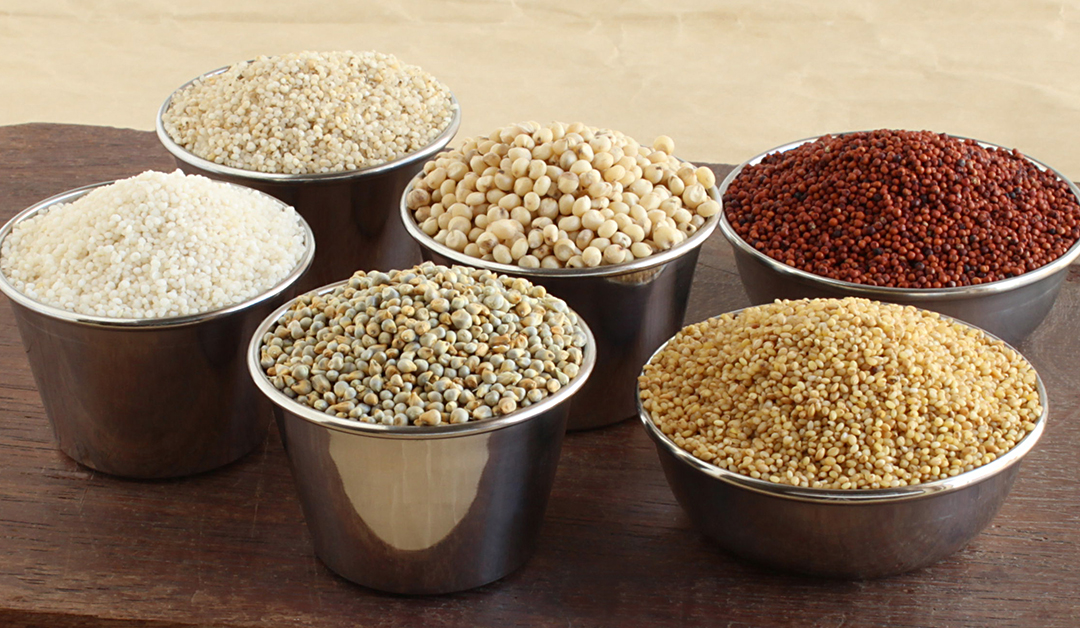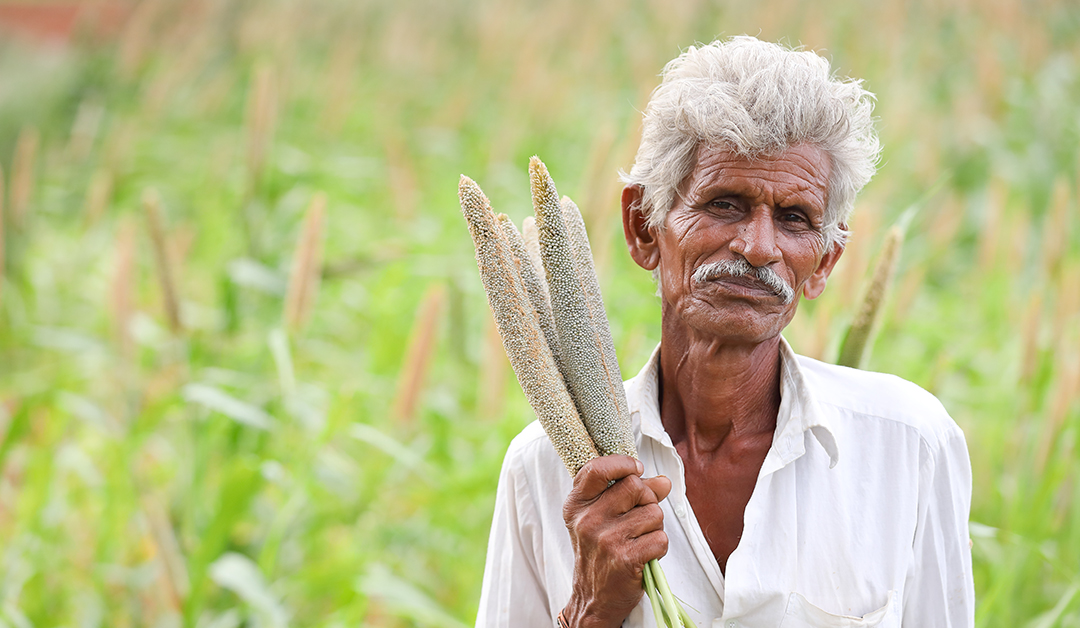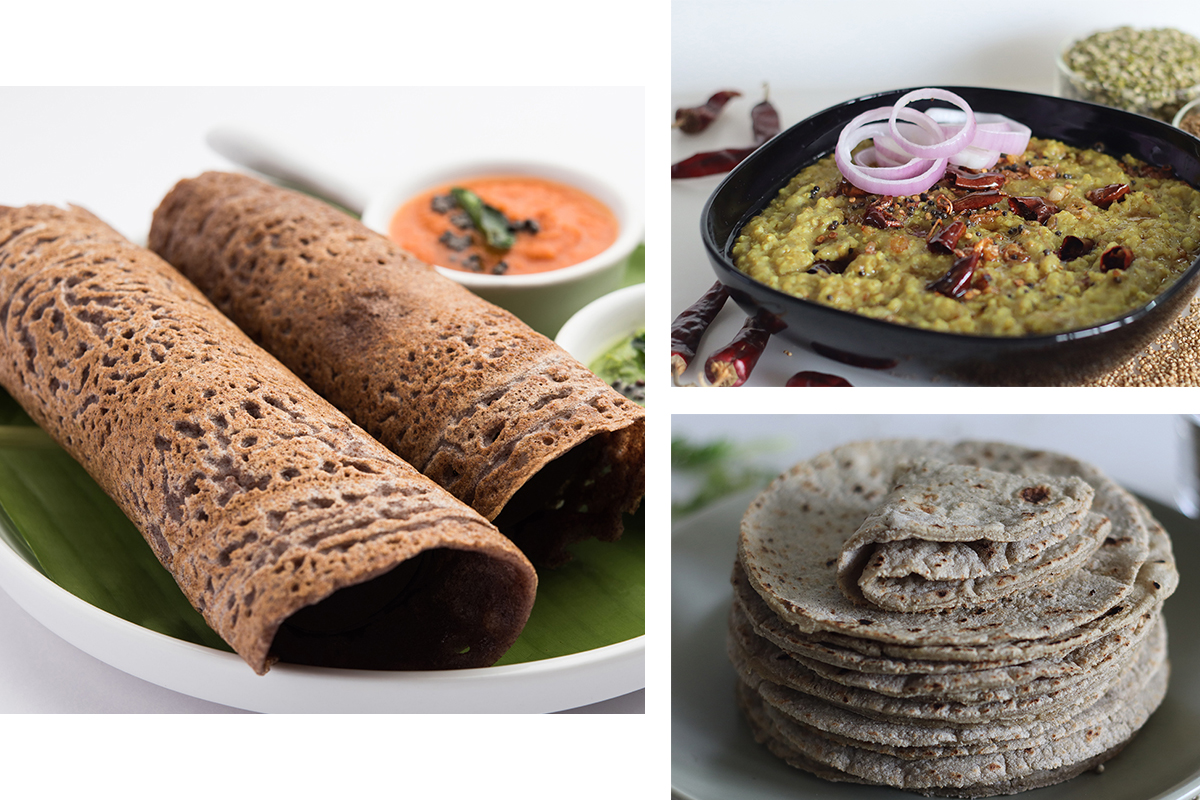Discover the Nutritious Value of Millet Grain: A Staple Food for 10,000 Years
Millets are a group of diversified, small, and varied round seeds, whole grains, or cereal crops cultivated throughout the semiarid tropics of Asia and Africa. They all belong to the Poaceae family, which is famous as the grass family, but it may also be categorized into different varieties or subfamilies. Millets are considered one of the most important staple foods in human history since they have been cultivated for 10,000 years. At present, the International Year of Millet (IYM 2023) was awarded by the United Nations General Assembly at its 75th session in March 2021.
Type of millets are available in the market as given below in the table

| Sl No | Scientific Name | Common Name | Regional Name | Locality |
| 1 | Pennisetum glaucum | Pearl millet | Bajra | Western Africa, Africa; and in Asia, India |
| 2 | Eleusine coracana | Finger millet | Ragi or Mandua | India and Nepal |
| 3 | Panicum miliaceum | Proso or Common millet | Aam baajara | Temperate climates as Russia, Ukraine, Kazhakastan, USA, Australia |
| 4 | Setaria italica | Foxtail millet | Koni dhaan, Kangni, Kangni or Kakun | India, Indonesia, Korean, Europe |
| 5 | Echinochloa esculenta | Japanese millet, Barnyard Millet, | Sanwa/ Samvat ke Chawal | India, Japan, China and Korea, |
Nutrient Facts of Millets
Millets are dietary grains that are nutritionally superior to other conventional cereals in terms of energy value, protein content, and macro- or micronutrient content. People are adopting new trendy culinary dishes today since they are worried about health risks. Millets are a good source of vitamins B-complex, calcium, iron, zinc, lipids, and rich-quality proteins, along with being high-quality sources of dietary fiber. One of the best benefits of millet is that it is a gluten-free cereal and a low-glycemic index food grain, which makes millet safe for people with gluten allergies and celiac disease.
Millets in India
India is credited for producing the most millet. According to APEDA data, two millet types, Pearl Millet (Bajra) and Sorghum (Jowar), produced 19% of the world’s millet. According to the data, India regularly cultivates eight types of millets, including Pearl millet, Finger millet, Foxtail millet, Kodo millet, Proso millet, Barnyard millet, and Small millet. Rajasthan produces the most mallets out of the five states of Gujarat, Maharashtra, Uttar Pradesh, Haryana, and Karnataka, with a 28.61% market share.

Health Benefits of Millets
- Millets are Gluten-free grain which is the best option for gluten intolerance diets for those people who are suffering from chronic digestive and immune disorders.
- Millets are a boon for constipation patients due to the rich quantity of dithery dietary fiber to help bowel movement and control sugar levels.
- Good sources of essential amino acids are present in millets.
- Millets are a rich source of various phytochemicals, including tannins, phytosterols, pinacosanols, polyphenols, phenolic acids, flavonoids, flavanols, and anthocyanins, which have an excellent capturing capacity for free radicals as well as antioxidant activity.
- It has magnesium-rich sources to help reduce blood pressure to minimize the risk of a heart attack.
- Millets are useful for reducing the risk of diabetes, cancer, and chronic diseases.
- Millets are helping lower cholesterol levels.

Drawbacks of Millets
Millets contains antinutrients such as phytic acid and goitrogenic polyphenols, which may cause poor reabsorption during digestion and lower the bioavailability of minerals. However, this can be minimized by soaking millet in water for at least an entire night and then washing, sprouting, or fermenting millet before consuming it in food.
Dilicious Millet Dishes
There are several dishes used in culinary activity, such as millet’s flour powder to make chapati, millet’s use as a substitute for rice, millet veggie burgers, millet’s grain bowls, millet green salad, millet falafel, and millet puffs.

Parameters for Millet Testing
To ensure the quality of millets in domestic and international markets, FSSAI has announced standards for 15 different types of millets. The quality parameters include moisture content, uric acid content, extraneous matter, other edible grains, defects, weevilled grains, immature and shrivelled grains. Additionally, testing for nutrient levels, pesticide residues, heavy metals & minerals, mycotoxin, uric acid, vitamins, PGR, ETO, protein, amino acids, and other contaminants, as well as dietary fiber, contribute to the quality control of millets.
If you are a millet producer or supplier, it is crucial to ensure that your product meets the quality standards set by FSSAI and other regulatory authorities. This will not only help you to build a positive reputation in the market but also protect the health of your consumers. To achieve this, consider getting your millet samples tested at Cultivator Phyto Lab, a trusted testing destination that offers comprehensive testing services to assess the quality of millets. Contact us today to learn more and take a step towards ensuring the high-quality of your millet products.

Authors
Dr. Sanjoy Gupta and Sajid Hussain
References
- https://www.fssai.gov.in/upload/notifications/2023/02/63fdb05adf62csample.pdf
- https://apeda.gov.in/milletportal/Production.html
- https://millets.res.in/m_recipes/Nutritional_health_benefits_millets.pdf
- FAO (1995) Sorghum and Millets in Human Nutrition. FAO, Rome.
- https://www.purewow.com/food/millet-recipes

